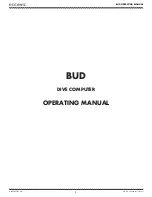
Section 5: Source-measure considerations
2470 High Voltage SourceMeter Instrument Reference Manual
5-8
2470-901-01 Rev. A /
May
2019
In the following graph, the resistive load is decreased to 800
Ω
. The DUT load for 800
Ω
intersects
the current limit, which causes the instrument to limit the voltage that it is sourcing. For the 800
Ω
DUT, the instrument will only output 40 V at the 50 mA limit.
Figure 95: 2470 current limit boundary example limited
Voltage source = Current * DUT resistance
= (50 mA)(800
Ω
)
= 40 V
Notice that as resistance decreases, the slope of the DUT load increases. Conversely, as resistance
increases, the slope of the DUT load decreases. At zero resistance (shorted output), the instrument
will source virtually 0 V at 50 mA. Regardless of the load, current will never exceed the limit of 50 mA.
Output transient recovery
The time required for the voltage source to recover to its original value (within 0.1% plus load
regulation errors) after a step change in load current is < 250
μs. This does not include the response
time of autoranging or the second order effects on loads that are not purely resistive.
Load regulation
The voltage specification for voltage source mode load changes is 0.01% +1 mV. This means that on
the 200 mV range, the load current can be changed from zero to full scale with less than 1.02 mV of
error. Calculation:
Error
= (0.01% x 0.2 V) + 1 mV = 1.02 mV
Assuming a 0 to 1 A change in current, the output impedance equates to
1.02
mΩ
(1.02 mV/1 A = 1.02
mΩ). This level can only be achieved using 4
-wire remote sensing.
















































